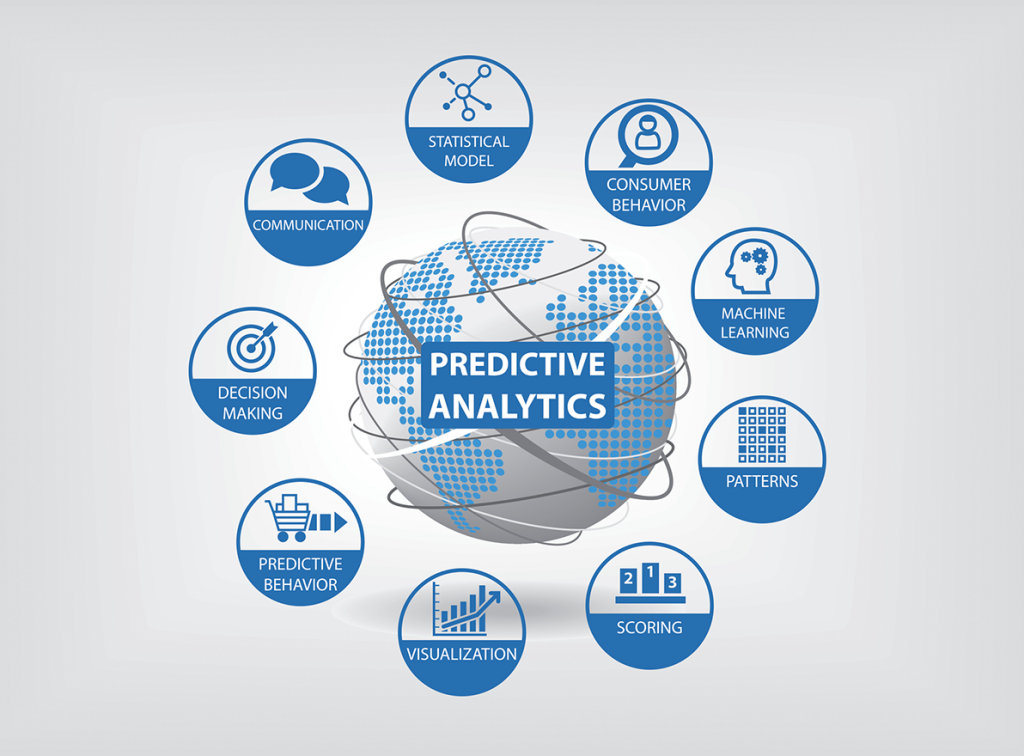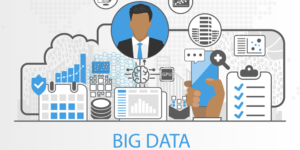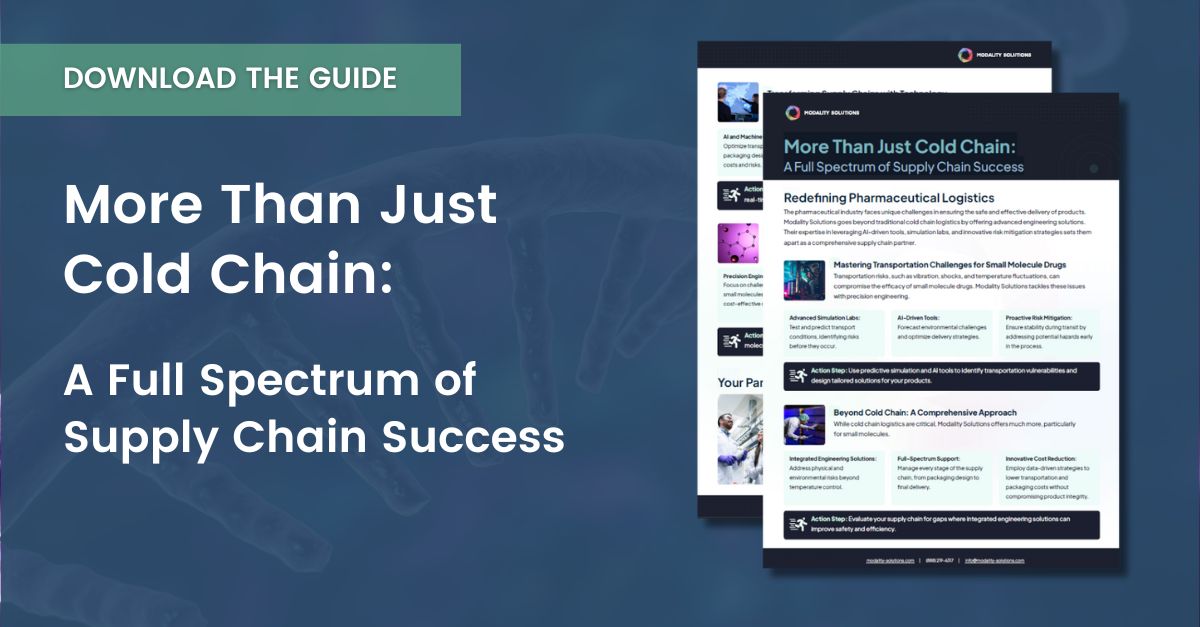Why Traditional Data Loggers May No Longer Meet FDA Regulations for Pharmaceutical Shipments
Temperature data loggers have been around for decades and were one of the first sensors in the biopharmaceutical cold chain. This technology provided temperature audit trails of shipments in transit, enabling partners in the cold chain to confirm whether the products remained within specification throughout transit and verifying the acceptability of the product for the next partner in the cold chain.
Unfortunately, most temperature data loggers utilized in the industry stopped developing at this limited functionality years ago and have not kept pace with the needs of the modern pharmaceutical cold chain. Increased need within the industry for visibility throughout the entire cold chain supply from manufacturer to end user is demanding data loggers to become more accessible and comprehensive. Data loggers are becoming a very important component in the entire cold chain process. However, the limitations of data loggers, even the misnamed ‘real time’ data loggers, become transparent.
Many data loggers are on the market today for temperature-controlled shipments of perishable biopharmaceutical products. Their latest advances allow real-time data monitoring capabilities, yet this technology can often fall short of reporting accurate data at all steps in the cold chain and impedes the ability of all partners in the biopharmaceutical cold chain from capturing the full visibility, scalability, and agility necessary to support the growth of the environmentally-sensitive biopharmaceutical therapy revolution underway.
The status quo technology requires significant manual input: data collection must start and stop through a data logger. If this operation is performed incorrectly, the shipment data may not be collected at all unless next-generation shadow monitoring is available. If the material handler activated the data logger at the initiation of transport, the receiving end completes the process by uploading the data and completing an ad hoc shipment review.
However, if the data logger is incorrectly placed by the material handler before the product is transported, the data collected would not be valid for the shipment per the qualification requirements of the shipping system. All these steps in the cold chain increase the likelihood of human error occurring along multiple cold chain touchpoints, potentially delaying the review process.
The focus has been on temperature logger technology, the hardware, and the data collection software that powers them, not on visualizing the data and proactively planning your cold chain. Status quo hardware and software are not empowering businesses to fully leverage the opportunities that the explosion of ‘big data’, ‘machine learning’ and artificial intelligence (AI) really presents, including predictive and prescriptive analytics and proactive response to prevent excursions from happening at all.
Is there a better way?
Most data loggers require the physical collection of data after a trip’s completion. Storage memory tracks temperature data captured at regular intervals, typically every 15, 30, or 60 minutes. After delivery, data is collected by connecting a USB cable from the logger to a PC or by other means and software reads and plots temperature (and possibly other environmental conditions) data, then the receiver must review the data to determine if product has been exposed to any deviations prescribed in the cold chain protocol and compliance.
Extracting data from loggers can take between 15 to 30 minutes per logger, and as previously described is a highly manual process. If the data shows a possible excursion with any variation from compliance and product quality, the products enter into a quality review process. The process review which follows may take up to 2 to 3 business days or longer depending on the type of product and length and severity of the temperature excursion. Without a complete data set, whether real-time or not, the biopharmaceutical cold chain is not able to ensure compliance. Visibility is worse than ad hoc: it is incomplete.
At the end of a shipment, loggers are typically discarded or returned to either the shipper or in some cases a third-party logistics provider. Even if they are designed to be reusable, without efficient reverse logistics processes in place, these data loggers may be just adding hazardous waste to the disposal stream.

Why do we need data loggers at all?
Less than a decade ago, the pharmaceutical industry believed it was not realistic to expect end-to-end visibility into shipment locations and statuses across an entire supply chain. Today, it’s not only possible and readily available, but there are cost-effective ways to achieve it. But is it enough?
At first, real-time data loggers were prohibitively expensive and used only for a portion of the supply chain, either for routes that have historically posed challenges, such as products moving into Brazil or Russia, or only for high-value shipments. Now, most continuous monitoring data loggers with data transmission available on the market are expensive because they require upfront investment before use. And even then, they fall short in providing 100% ‘real-time’ visibility over these important shipments, including the monitoring of environmental conditions (temperature, humidity, light) and product location.
Due to cost concerns, unreliable manual data retrieval, and additional waste attributed to shipments from discarded loggers, all partners in the cold chain, even traditionally well capitalized or funded biopharmaceutical innovators, have resisted pursuing ‘real-time’ data loggers as an option to connect all shipments across the cold chain, resulting in limited visibility only to projects or shipment routes.
Predictive analytics powered by big data
The fast-moving, constantly changing cold chain can be impacted at any moment by a variety of environmental factors. The greatest risk to a therapeutic product in transit is the impact of weather to both temperature control and on-time delivery. A late or damaged load has downstream effects that can lead to medicines and vaccines not reaching patients.
Today, the biopharmaceutical cold chain requires more than 100% visibility. While the focus continues on late and off-schedule shipments that threaten to disrupt operations, trigger a compliance event, and eventually challenge their regulatory reputation, a shift towards utilizing ‘big data’ and machine learning to drive predictive analytics for more proactive management practices is happening. This change away from data capture to forward-looking predictive analytics leads to more informed decision making, ensuring efficiency, and productivity across the supply chain.
Utilizing a wide range of weather data, a predictive analytics capability allows biomanufacturers and logistics partners required to follow US Food and Drug Administration (FDA) regulations to have instantaneous, ‘real-time’ visibility on 100% of the shipments in their supply chains, without a cumbersome data logger system in the way. Data logger solutions on the market today, including systems marketed as a ‘real time’ solution, are not equipped with the technology to provide live data during transport.
In a recent LogiPharma publication, [1] the majority of respondents, including 100 top decision makers in the pharmaceutical industry, cited innovating their distribution channels to remain competitive and improving end-to-end visibility as among their key challenges, and view Big Data (machine learning, artificial intelligence and advanced analytics) as likely having a considerable impact on the supply chain in the next five years. No data loggers and their partnered services currently on the market will get them the results envisioned.
Predictive data analytics is the future of efficient supply chain. manufacturers, wholesalers, distributors, and other partners are requiring greater visibility and proactive management to mitigate the issues that will jeopardize cold chain processes and impact their ability to comply with FDA regulations for pharmaceutical shipments. Previous track-and-trace methods powered by next-generation data loggers cannot meet end-to-end supply chain visibility required. Industry changes warrant developing and utilizing technology that provides predictive capabilities tied to ‘big data’ weather analysis in order to meet the need for an end-to-end, transparent and adaptive cold chain. Cold chain can be a differentiator when competing for market share, rather than a drain on resources.
It’s already possible.
Building an efficient and proactive cold chain goes beyond 100% continuously monitoring your assets. It requires the ability to foresee what will go wrong, where it will go wrong, when it will go wrong, and what needs to be done to avoid the risk in the first place.
To be proactive, the biopharmaceutical cold chain needs to leverage more than the power of real-time data loggers and the data they provide, not only to know how their shipment or goods are doing continuously but also to allow continuous risk monitoring and management.
Smart cold chain design involves data analytics using decision support tools and visual data. This involves looking at divergent and related data and combining them into actionable items. One is past trends in logistics patterns and two is in-depth analysis of future predicted data for the cold chain.
Prescribe, predict and forecast when optimizing your cold chain.
Utilizing complex data analysis will lead to efficient shipping lane selection, and appropriate monitoring during transport. However, measuring and monitoring excursions is useful but not cost effective or efficient. Preventing any excursions from occurring through accurate forecasting will allow shipment day and time management.
While continuous updated data is a vital aspect of cold chain in general, there is a need to integrate all aspects of cold chain supply process under one clear, reliable technology platform that will combine all parameters and provide automated solutions to optimal logistics.
Your partner in the cold chain analytics should add significant value and expertise, to the following attributes:
- A track record of continually innovating solutions to surpass customer and industry needs
- An extensive history with complex biopharmaceutical cold chains
- Deep understanding of the complex algorithms necessary to tie ‘big data’ weather events to lane-specific, network-specific temperatures
REFERENCES
1. WBR Insights. Differentiated by Supply ChainA LogiPharma Report 2018. LogiPharma. London: WBR Digital, 2018.







